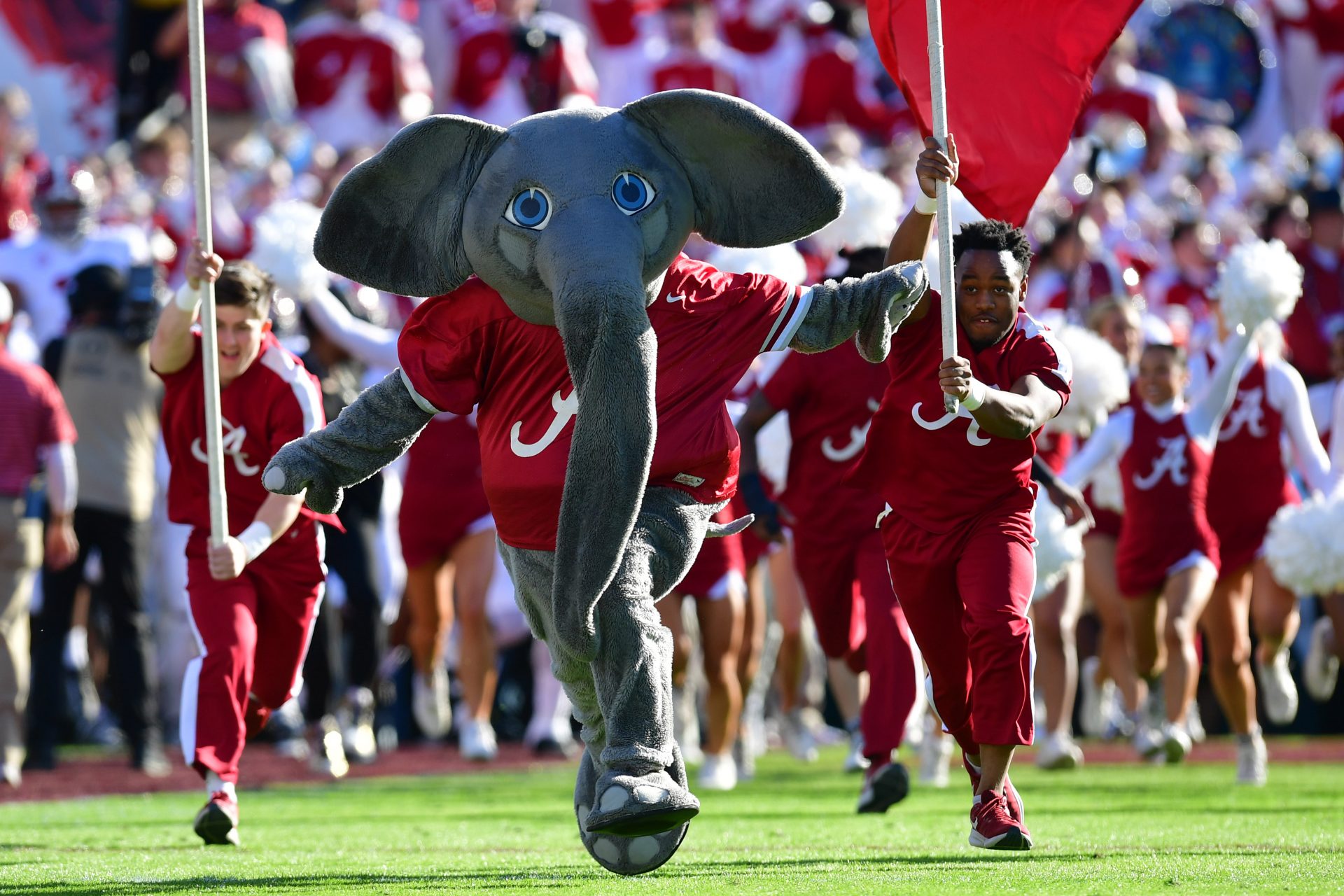The Alabama Crimson Tide boasts one of the most unique mascots in college football — an elephant named “Big Al.” While Alabama is celebrated for its athletic success, with 16 national championships spanning almost a century, the origins of its mascot is a story within itself.

Meet Big Al: The Story Behind Alabama’s Elephant Mascot
Big Al, the beloved elephant mascot of Alabama, has been a staple on the sidelines for over 30 years. However, the story behind this iconic figure stretches back even further, to an Alabama-Ole Miss football game many decades ago.
On October 8, 1930, sports writer Everett Strupper of the Atlanta Journal chronicled the Alabama-Mississippi game he witnessed in Tuscaloosa four days prior. Strupper wrote about the formidable team that Alabama coach Wallace Wade had assembled, noting the sheer size and power of the players. In his article, he remarked, “When those big brutes hit you, I mean you go down and stay down, often for an additional two minutes.”
As the game progressed, Strupper described a moment that would go down in history: “At the end of the quarter, the earth started to tremble; there was a distant rumble that continued to grow. Some excited fan in the stands bellowed, ‘Hold your horses, the elephants are coming,’ and out stamped this Alabama varsity.”
This dramatic description led to Alabama’s football team being referred to as the “Red Elephants” in various newspaper reports, associating the squad’s size and strength with the mighty animal. This connection eventually evolved into the adoption of the elephant as the team’s official mascot.
Why Did Alabama Pick an Elephant as a Mascot?
The decision to adopt an elephant as the mascot was inspired by the imagery created by Everett Strupper’s article. His vivid portrayal of Alabama’s 1930 football team as “elephants” resonated with fans and writers alike. The term captured the essence of Alabama football: powerful, imposing, and dominant on the field.
The elephant’s association with Alabama football grew over time, becoming more entrenched in the team’s identity. Eventually, the university made the connection official with the creation of the mascot, Big Al. The choice of an elephant symbolized the team’s strength and presence, qualities that fans proudly embraced. Big Al became more than just a sideline figure; he came to represent the spirit and tradition of Alabama football.
Big Al’s Role in Alabama Tradition
Big Al isn’t just a sideline attraction; he’s a mascot representing Alabama football’s spirit and pride. From leading the team onto the field to energizing the crowd during games, Big Al plays a crucial role in creating the electrifying atmosphere at Bryant-Denny Stadium. His presence is a source of excitement for fans of all ages, and he’s a key part of the game-day experience.
Beyond the field, Big Al is a staple at community events, parades, and university functions, helping to foster a sense of unity and tradition among Alabama supporters.
KEEP READING: Nick Saban Coaching Tree Showcases Remarkable Influence of Former Alabama Head Coach
He’s not just a mascot; he’s an ambassador of the Crimson Tide’s enduring legacy. Big Al’s playful yet commanding presence embodies the power and prestige of Alabama football, making him a cherished symbol for fans across generations.

